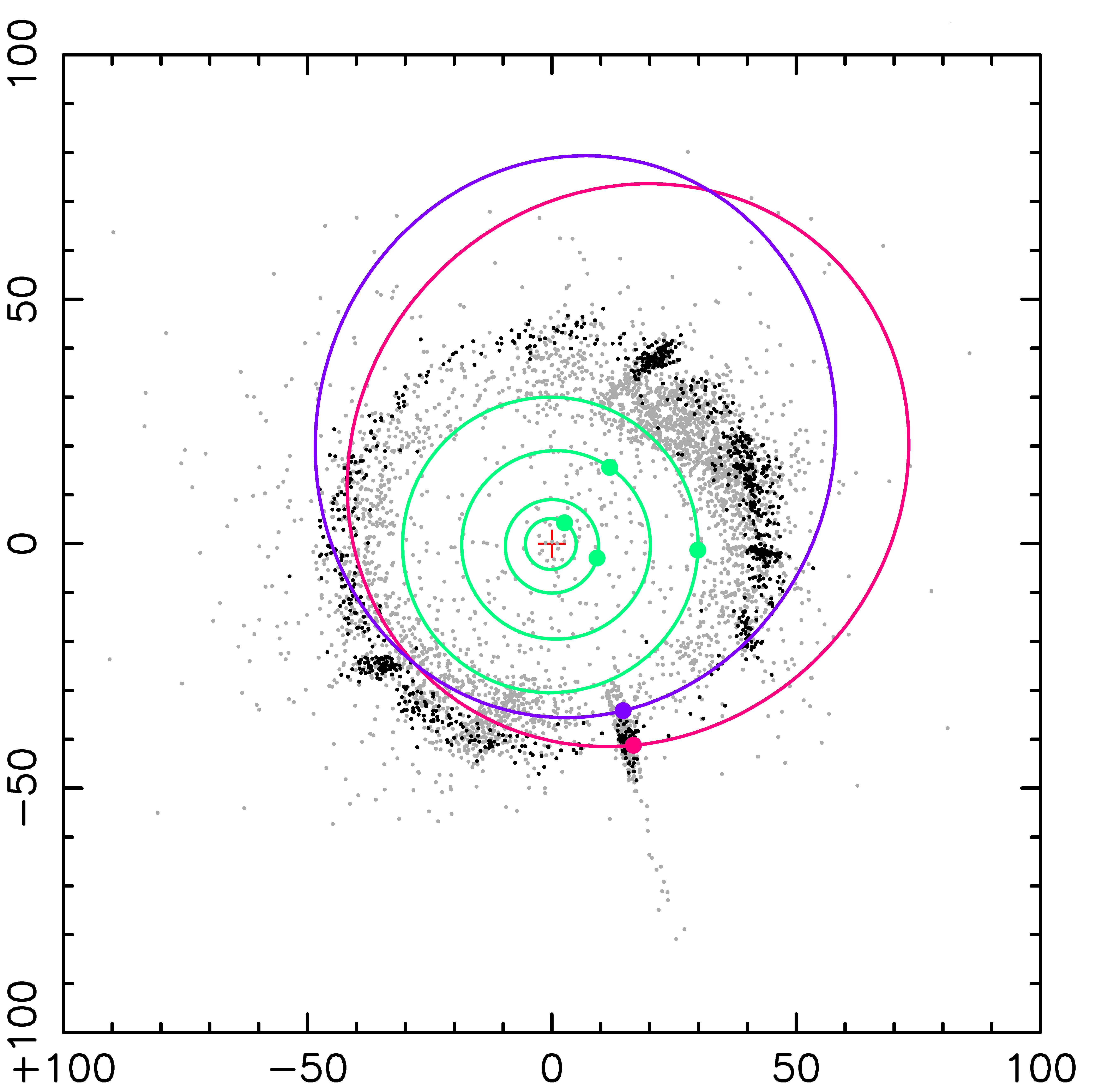Overview
The Subaru Telescope's wide and deep imaging observations are contributing information to the New Horizons spacecraft as it moves through the outer Solar System. By applying a unique analysis method to images of Kuiper Belt objects taken by the Subaru Telescope's ultra-wide-field camera, objects that have the potential to extend the Kuiper Belt region have been discovered. The results of this research were published in Publications of the Astronomical Society of Japan on May 29, 2024 (Yoshida et al., "A deep analysis for New Horizons' KBO search images"). Associate Professor Takashi Ito of the Center for Computational Astrophysics (CfCA) contributed to this research. For more information, please read the Subaru Telescope's webpage. (June 26, 2024)

Download: [PNG (2 MB)]
Researcher's Comments
The New Horizons mission is largely led by scientists in North America, but NAOJ’s Subaru Telescope plays a central role in the ongoing ground-based observation to support it. Astronomers in Japan also contribute not only in the observation but also in the development of data analysis methods and theoretical calculations. In addition to being a member of the observation planning team that also participates in the actual observation activity, I have also taken part in the final stage of data analysis - the visual verification (vetting) of the source to determine whether the detected signal is a true source or not. By conducting observations using a Japanese telescope and processing the data using a method developed in Japan, we discovered objects that will greatly expand our knowledge of the outer Solar System. This effort culminated in the first paper that the New Horizons ground-based observation team published. I am really pleased and honored to have been a part of this mission.
(Takashi Ito, CfCA/NAOJ)
Publication Information
Title: "A deep analysis for New Horizons’ KBO search images"
Authors: Fumi Yoshida et al.
Journal: Publications of the Astronomical Society of Japan
DOI: 10.1093/pasj/psae043
For the Use of Contents in This Website
- Contents are to be used with a clear indication of its copyright (e.g. (c) NAOJ.)
- If you would like to use the contents found in this web site, please follow Terms of Use of the Website of NAOJ.
Related Links
Subaru Telescope, NAOJ: A New Horizon for the Kuiper Belt: Subaru Telescope's Wide-Field Observations
ISAS, JAXA: A New Horizon for the Kuiper Belt: Subaru Telescope's Wide-Field Observations
PERC, Chiba Institute of Technology: A New Horizon for the Kuiper Belt: Subaru Telescope's Wide-Field Observations
